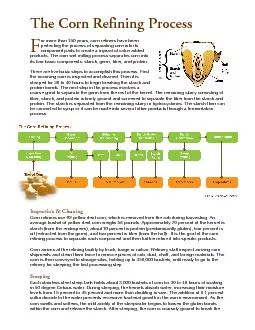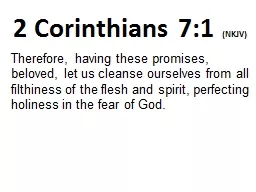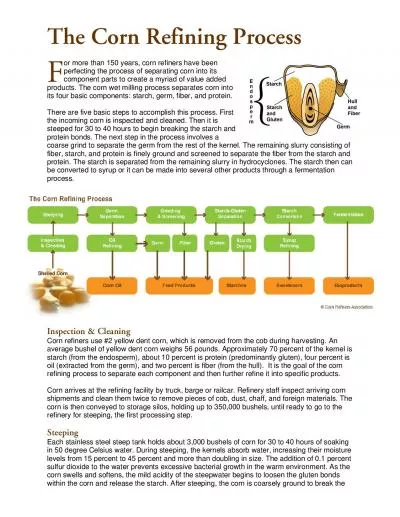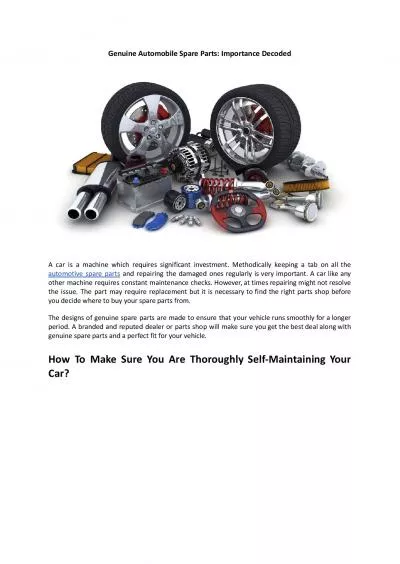PDF-The Corn Refining Process or more than years corn refiners have been perfecting the process
Author : liane-varnes | Published Date : 2014-11-29
The corn wet milling process separates corn into its four basic components starch germ fiber and protein There are five basic steps to accomplish this process First
Presentation Embed Code
Download Presentation
Download Presentation The PPT/PDF document "The Corn Refining Process or more than ..." is the property of its rightful owner. Permission is granted to download and print the materials on this website for personal, non-commercial use only, and to display it on your personal computer provided you do not modify the materials and that you retain all copyright notices contained in the materials. By downloading content from our website, you accept the terms of this agreement.
The Corn Refining Process or more than years corn refiners have been perfecting the process: Transcript
Download Rules Of Document
"The Corn Refining Process or more than years corn refiners have been perfecting the process"The content belongs to its owner. You may download and print it for personal use, without modification, and keep all copyright notices. By downloading, you agree to these terms.
Related Documents














